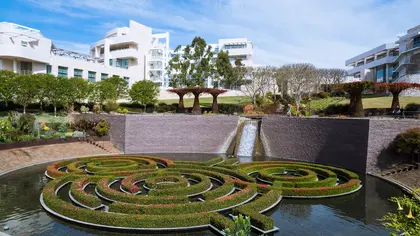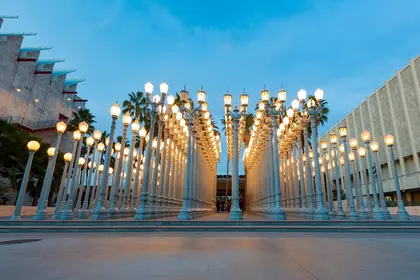Next year, the Carnegie Observatories will participate in a region-wide exploration of the intertwined history of art and science in Los Angeles organized by the Getty.

Pacific Standard Time: Art x Science x L.A. aims to foster a “civic dialogue about the intertwined history of two critical fields and their relationship to pressing worldwide concerns.” The Hammer Museum at UCLA and the LACMA are key collaborators to this initiative, which will celebrate historic contributions to science and technology that occurred in the greater L.A. area, including Carnegie astronomer Edwin Hubble’s discovery of the universe beyond our Milky Way galaxy, as well as key moments in aviation and space exploration.
“What we today recognize as art and science sprang from the same origins—a shared desire to explore and explain the universe in all its dazzling diversity,” Jim Cuno, president and CEO of the J. Paul Getty Trust said earlier this year. “The Getty is in a unique position to convene experts in both realms through Pacific Standard Time: Art × Science × LA and encourage museums and scientific institutions to open a far-reaching conversation throughout Southern California about their shared history, the critical challenges we face on our planet today, and the creative solutions they demand.”
As part of this effort, Carnegie will partner with LACMA on the upcoming exhibition, Mapping the Infinite: Cosmologies Across Cultures, which will include astronomical art and cosmological creations from around the world and explore questions about space, time, creation, and perception.
Last month, Observatories Director and Carnegie Deputy for Science John Mulchaey and Carnegie astronomer Juna Kollmeier participated in a program about of the birth of modern astronomy and the many ways that space has captured the imaginations of artists and scientists through history.

From the stage of the Academy Museum auditorium, LACMA’s Stephen Little provided a sneak preview of the pieces that would be on display next fall. Little is the Curator of Florence and Harry Sloan Curator of Chinese Art and Head, Chinese, Korean, and South and Southeast Asian Departments. His presentation included fascinating details about ancient objects for mapping space and time—including star charts, an astrolabe, and an Egyptian object called a merchet—as well as artwork celebrating cosmic deities and zodiacs from various cultures.
“The explosive growth of astronomical discoveries in the last century provides a fascinating new chapter in the cultural histories of cosmology that will be revealed in LACMA’s exhibition brilliantly organized by Curator Stephen Little,” said Observatories Strategic Initiatives Coordinator Erica Clark, who played a key role in building the relationship between Carnegie and the museum. “The Carnegie Observatories—renowned worldwide for its foundational discoveries in contemporary astronomy—is proud to collaborate with LACMA in this major PST-related exhibition, providing scientific expertise, educational programming, and rare ephemera throughout its duration.”
During the October program, Mulchaey talked about the centennial of Hubble’s world-changing discovery and the major contributions to astronomy made by both the 100-inch Hooker telescope at Mount Wilson Observatory and the Hubble Space Telescope, which launched in 1990 and advanced our knowledge of the universe for more than 30 years.
Kollmeier noted that modern astronomers are still working to answer many of the questions that Nicolaus Copernicus and Galileo Galilei first posed, such as: “What is our orientation in the cosmos, what is the composition of the cosmos, and what are the rules governing the cosmos.” However, she assured the eager audience of 300 that “we are poised to make big breakthroughs.” Kollmeier leads the fifth generation of the Sloan Digital Sky Surveys and is the Director of the Canadian Institute for Theoretical Astrophysics.

Art x Science x L.A. will be the fourth Getty-sponsored Pacific Standard Time collaboration. Previous topics have included Los Angeles art in the Cold War era, modern architecture, and Latin American and Latino art.
In addition to Carnegie and Mount Wilson Observatory, the 2024 initiative will also highlight Griffith Observatory and the Jet Propulsion Laboratory, among other science-related organizations. Overall, the latest Pacific Standard Time initiative will involve about 60 shows, highlighting a variety of topics from climate change to holograms to cyberpunk culture to Indigenous futurism.
